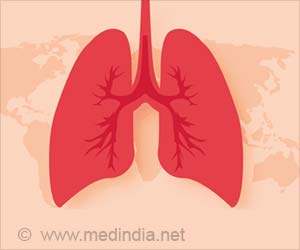Some 36 million people have been cured of tuberculosis (TB) over the past 15 years through a rigorous approach to treatment endorsed by WHO.
Some 36 million people have been cured of tuberculosis (TB) over the past 15 years through a rigorous approach to treatment endorsed by WHO. New data, released by WHO, also indicate that up to 8 million TB deaths have been averted, confirming DOTS/the Stop TB Strategy as the most cost-effective approach in the fight against tuberculosis.
DOTS was first developed in 1994 and was later incorporated into the WHO Stop TB Strategy as its main component. DOTS has five elements: political commitment with increased and sustained financing, case detection through quality-assured bacteriology, standardized treatment with supervision and patient support, an effective drug supply and management system, monitoring and evaluation system and impact measurement.Steady progress in curing TB and saving lives
Since the launch of DOTS, the number of people being cured has increased regularly. Data from the latest 12 month period now shows that the highest ever number of infectious patients – 2.3 million people – were cured. With 87% of treated patients being cured, the 85% global target was exceeded for the first time since it was established in 1991. Furthermore, a total of 53 countries surpassed this treatment milestone.
The WHO update shows continued progress on addressing the lethal combination of TB and HIV. Between 2007 and 2008, 1.4 million TB patients were tested for HIV, an increase of 200, 000. Of those who tested HIV positive, one-third benefited from life-saving HIV anti-retroviral therapy (ART) and two-thirds were enrolled on co-trimoxazole prophylaxis to prevent the risk of fatal bacterial infections. In addition, screening for tuberculosis and access to isoniazid preventive therapy for TB among people living with HIV more than doubled, although the total number is still far short of what it should be.
"Fifteen years of TB investments are bringing visible results in terms of human lives saved. Together, national programmes, WHO, UNAIDS, the Global Fund and other partners have helped save millions of lives from TB," said Dr Mario Raviglione, Director of WHO's Stop TB Department. "But the current pace of progress is far from sufficient to decisively target our goal of TB elimination."
Not all receiving the treatment they could
Although more and more patients are being cured, there are millions who are being let down because they are unable to access high-quality care. TB remains second only to HIV/AIDS in terms of the number of people it kills. In 2008, 1.8 million people died from TB including half a million deaths associated with HIV - many of them because they were not enrolled on ART.
Advertisement
Of the estimated 9.4 million TB cases in 2008 (including 1.4 million TB/HIV cases), 3.6 million cases occurred among women.
The new report provides the most accurate information on the global burden of tuberculosis. It also features updates about the work of the Global Laboratory Initiative, the WHO Global Task Force on TB Impact Measurement, and describes the success of a new initiative in 2009 in which global TB data collection went online.
Contributed by: Bobby Ramakant
Source-Medindia
SRM









